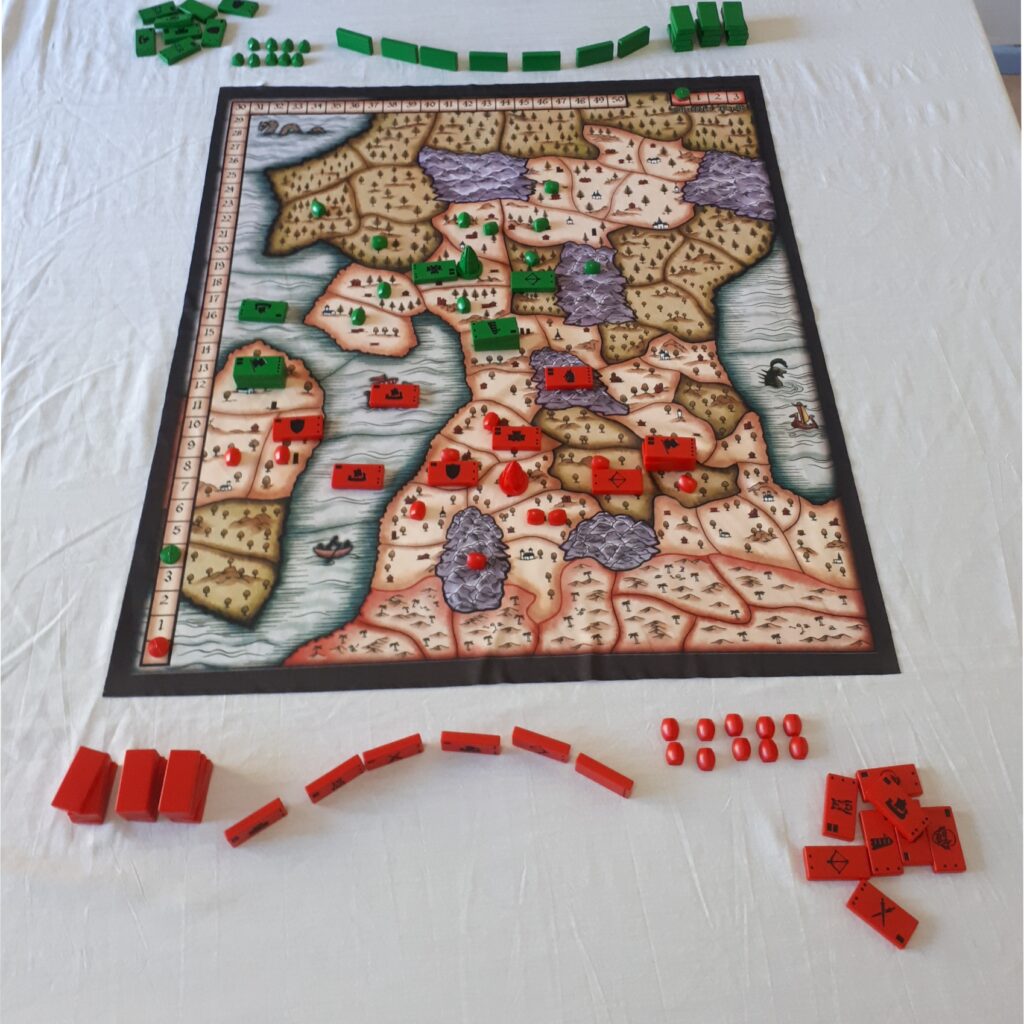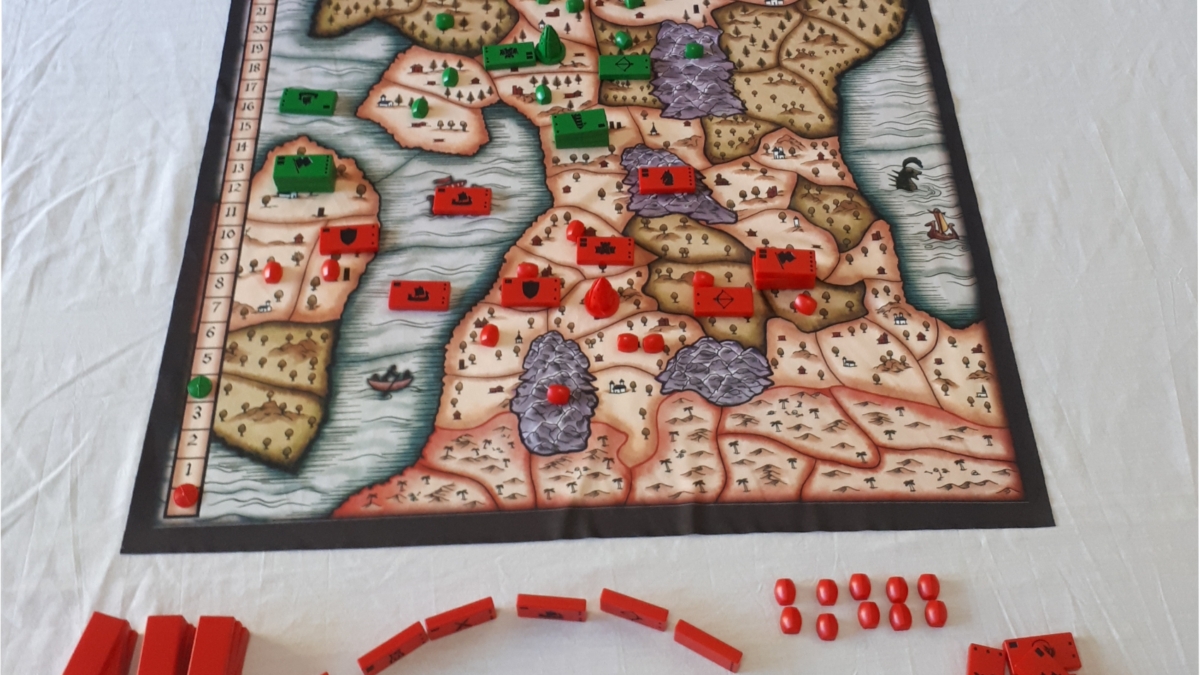My life was in a state of flux back then. Julia had fallen in love with Australia after our first visit in 2009 and convinced me that we should emigrate. That proved harder than we had thought, as we were already nearing fifty. Julia then suggested New Zealand, as if you could gain residency there then you could then go to live in Australia. Please note this is no longer true, as the Australian government got tired of various folks coming in that way. The rule now is you have to be a citizen, and even then you do not get the same rights as an Australian citizen. Anyway, I digress. I had not started on the physical design of the game but knew that it would have 20mm by 40mm tiles. Therefore, before leaving for the distant land of Aotearoa, I ordered a few thousand wooden tiles from my supplier, DETOA. Back then I was publishing games through Treefrog, which meant lots of wooden pieces. DETOA is a Czech company that makes some of the best wooden pieces around and I used them for all of the Treefrog games.
‘Bloodstones’ was one of the first projects I started on once we reached NZ. We had washed up in Coromandel Town, which is on the Coromandel peninsula. It’s a breathtakingly beautiful part of the world, but without many gamers around. The core mechanic of Bloodstones came from another game I was working on back then, which ended up being published as ‘Lincoln’. In this game you have to permanently discard cards to build units, which I think of as a deck-destruction game. ‘Bloodstones’ has a similar vibe except that everything is simpler, as building a unit means taking one of your tiles and placing it on the map, thus removing it from your ‘deck’ cycle. I wanted each player to have a different set of tiles, creating a nice asymmetry. Hence the fantasy theme. I could not think of a historical period which would be suitable for such a multi-player wargame. The lure of fantasy is that you can do whatever you want. You want dragons, not a problem sir, how many would you like?
You cannot design a game in isolation. At some point you need other people to sit down and play with. As mentioned, Coromandel Town was not crawling with gamers, so I started a club to see who I could entice into the world of gaming. I got the word out and a small group of locals came down to the local church hall to see what these new-fangled games looked like. I started them on the easy stuff like ‘Bluff’ and ‘Ticket to Ride’. Then once I had drawn them in I hit them with the first playtest. I could see that the game was going to work from that first game, but that my dream of the ultimate ‘clean’ game was going to get a little muddier. I needed some way to mark control of areas, so I had to add control markers to the mix of tiles, which became villages.


